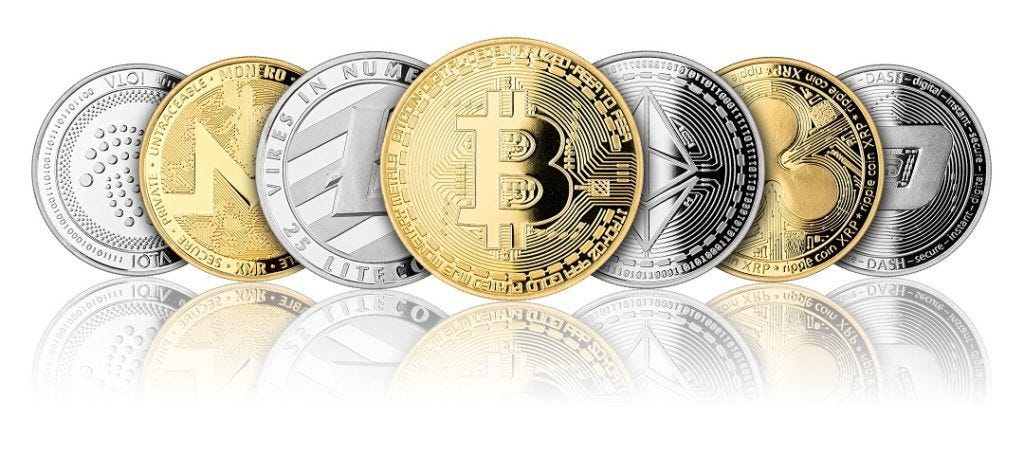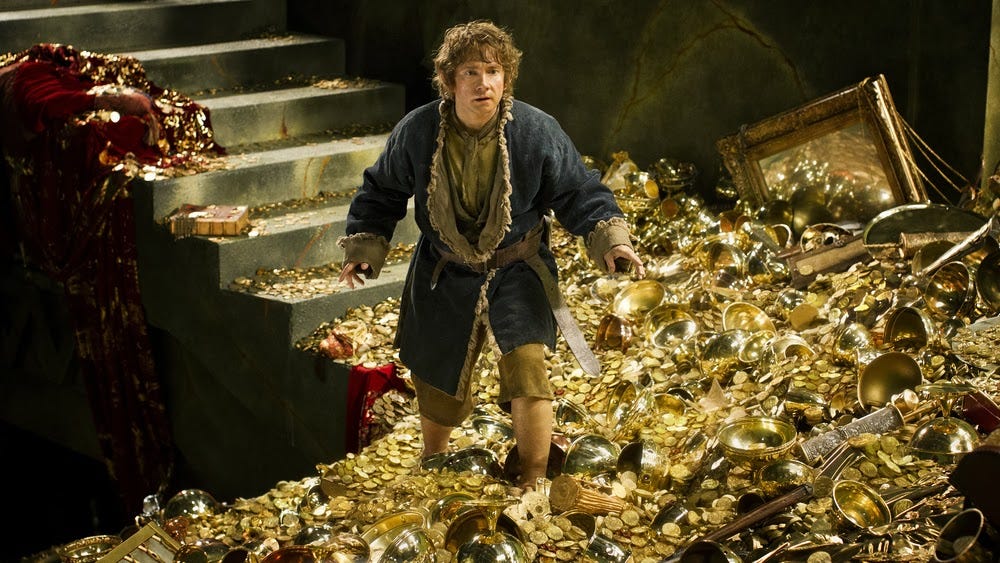Solving the Triffin dilemma
Reducing the trade deficit while, at the same time, ensuring a competitive dollar value
“I love tariffs – my favorite word in the dictionary.”
— President Trump
President Trump’s statement makes one thing clear: the era of unfettered free trade is over. The United States now faces a near-peer adversary and must realign its economic priorities. Tariffs are seen as the most effective tool for reshoring industry and by that, reducing the trade deficit, while at the same time ensuring that American families and communities can once again take part in the value creation.
However, if the United States does succeed in shrinking its trade deficit, it faces a new challenge. While the U.S. domestic money supply is roughly $20 trillion, total offshore demand for dollars — including global reserves, trade settlement, and dollar-denominated debt — extends to at least $80–100 trillion, nearly five times larger than domestic demand.
As the issuer of the world’s primary reserve currency, the U.S. must provide enough dollars to meet global demand — which historically has meant running persistent trade deficits. Reducing the deficit would limit the supply of dollars to the rest of the world, increasing demand for them and pushing up the dollar’s value. A stronger dollar makes American exports less competitive, potentially undermining the very goal of revitalizing domestic industry. This dynamic is known as the Triffin dilemma — and the United States must find a workaround.
The Trap: A Strong Dollar Versus a Strong Industry
The Triffin dilemma is exceptionally difficult to solve if you think inside the current economic system, but outside of it, there are options — and recent events could give us an idea of which direction the United States might be heading. It’s highly disruptive for global markets.
To any strategist, it is obvious that in a competitive environment, you must leverage your own strengths. For the United States, these strengths have historically included its vast domestic market, its military power, its industrial base, its national unity, and, of course, the dollar. But over the past four decades, many of these pillars have been steadily eroded. Industry has been outsourced in pursuit of lower costs, the domestic market has been artificially inflated through layers of financial engineering, and the trade deficit — now hovering around 7–8% of GDP — continues to feed an ever-growing debt burden.
I have not included all the strategic strengths, but one more is especially important to remember — the Silicon Valley technology industry. This is where the United States still has the upper hand on China — and more importantly, the ability to change the rules of the global game of monopoly.
Erebor Bank: A Speculative Glimpse of the Future
What I propose is highly speculative, but there is a chance that what is now taking place in Silicon Valley is the start of a new economic system — one not leveraging free trade but adapted to the new international landscape.
Two days ago, Peter Thiel, Palmer Luckey, and Joe Lonsdale announced they were going to launch a new digital bank to fill the void after Silicon Valley Bank’s collapse. Contrary to normal banks, the Erebor Bank will be backed not just by dollars but also by cryptocurrencies, with a special focus on stablecoins.
Erebor Bank is interesting both because of the strategic importance of Silicon Valley going forward and its experimentation with crypto. But it is only when you understand the mindset of the so-called PayPal Mafia, from which Thiel, Luckey, and Lonsdale originate, that it becomes truly interesting.
The Founders Fund’s 10X Monopoly Playbook
The Founders Fund, led by Peter Thiel — and now backing Erebor Bank — has a very different investment strategy than most other investment companies. While most investors have a diversified portfolio for risk reduction and marginal gains, the Founders Fund only invests in companies that have the potential to outperform the market 10X, and by doing so, be in a position to establish a monopoly.
So, outperforming the banking market in Silicon Valley by providing credit to new start-ups 10X better — that alone is not very revolutionary. But the PayPal Mafia also has another operating philosophy: always start with a market so small that you can dominate it. Establish a local monopoly and expand from there.
None of this is groundbreaking if you don’t know the original business idea of PayPal itself. PayPal was established to become a viable alternative to the U.S. dollar. That did not happen, but since the beginning of PayPal, Peter Thiel has been convinced that creating a dollar alternative is possible — and so has his team.
I’m not advocating for, nor am I expecting, the fall of King Dollar, but follow with me and I will tell you why Erebor Bank is different.
Stablecoins, Control, and the Strategic Vault
Ok, so Erebor Bank will issue tokens to back next-generation Silicon Valley companies. The thing with stablecoins — the type of coins the new bank will focus on — is that you can control where they flow. For Erebor, that means better control of what the offered credit is used for. Less noise — more results.
Stablecoins and/or CBDCs (Central Bank Digital Currencies) are getting increasing attention from government actors as a tool to direct the flow of capital in the new international environment — both as a way to direct capital flow into friendly markets and certain critical sectors, and as a tool to reduce the sovereign debt burden (allowing debt to be inflated away by directing, for example, pension funds to invest domestically).
Back to Erebor — and this is where it starts getting interesting.
Not Pegged to the Dollar? A Radical Twist
Normally, you should expect the Erebor token to be pegged to the dollar, like other digital currencies. But what if this is not the case? What if Peter Thiel does something completely different? Gold, you’re thinking. No. Gold is not it.
Peter Thiel and the technological aristocracy surrounding him are deeply committed to making the United States great again. And as Thiel rightly points out, conflict arises not when you have a top dog — but when you have none and all the dogs compete for the dominant position. Reestablishing United States deterrence is completely in line with the philosophies of Peter Thiel, which he so thoroughly describes in his book Zero to One.
While central banks around the world buy gold, my hunch is that the team behind Erebor Bank has other plans.
A Technological Republic and the End of the Fed?
President Trump has several times said that he would get rid of the Federal Reserve Bank. Mostly, this is interpreted as Trump wanting to control interest rates to keep inflation at a manageable level. But what if he really means it? What if he wants to make the Federal Reserve irrelevant — how would he then proceed?
President Trump has great respect for Peter Thiel — not only the founder of PayPal, Palantir, and the Founders Fund, but also the person who introduced him to J.D. Vance, now Vice President.
Palantir, a leading data integration and advanced analytics platform, was instrumental in coordinating the COVID-19 vaccine rollout during the first Trump administration by providing real-time data tracking, supply chain monitoring, and predictive modeling. The cooperation between the parties have only strenghtened since.
We are no longer in a free trade environment and both President Trump and Thiel want to make America into a strategic fortress — or a Technological Republic, as described by Peter Thiel’s lifelong friend and Palantir CEO, Alexander Karp, in the book The Technological Republic (2025).
Erebor’s Vault: A National Fortress for Innovation
The name Erebor refers exactly to this: Erebor’s vault was famed for its vast treasure hoard deep inside the Lonely Mountain of the dwarf kingdom in Tolkien’s The Lord of the Rings. By using the Erebor Bank as a fortress vault inside the ideological community, the United States could secure financing for its most vital asset — the innovation community — and by backing the tokens not with gold nor with the dollar but with U.S. Treasuries, the Erebor project would be both patriotic and stable while reducing dependency on the Fed-controlled settlement system.
This is a truly cunning move that leverages U.S. government credit as your asset pool while you strategically and silently dismantle the Fed’s monetary monopoly.
Not much has been stated publicly about Erebor, but let’s play with a potential next step. By directing Erebor tokens to companies and sectors that align with national priorities, you can direct investments towards vital national interests as defined in the Technological Republic.
Fairly suddenly, due to the large reshoring and investments we can expect to see in the United States, we could see a substantial token-backed tech sector emerge — undermining the leverage of the S&P 500 and the value of the too-big-to-fail companies — and by that, creative destruction and true innovation are reestablished.
Solving the Triffin Dilemma — A Final Thought
But that’s not all. I began by framing this as a strategy to address the Triffin dilemma — that is, enabling the issuer of the world’s reserve currency to reduce its trade deficit while staying competitive and avoiding excessive upward pressure on the dollar. This is precisely what this approach achieves.
The dollar would remain the primary currency for international transactions and global reserves, making it easier to monetize U.S. debt and providing the U.S. with greater leverage over the pricing of key commodities. Meanwhile, Erebor tokens would serve as an internal safeguard — a secure, closed-loop domestic currency or digital asset backed by real industrial output, critical resources, or strategic reserves.
In essence, Erebor tokens keep the “vault” locked: they anchor value creation within the national economy, prevent capital flight in vital sectors, and ensure that the foundations of industry and production remain protected from the distortions of global dollar flows.
Fortress America, Zero to One Style
I am not predicting the fall of the dollar. But in a competitive, multipolar world, the United States must leverage its remaining strategic assets. Erebor might be the first piece of a new fortress — one where a Technological Republic learns to control the flow of its capital and its destiny.



